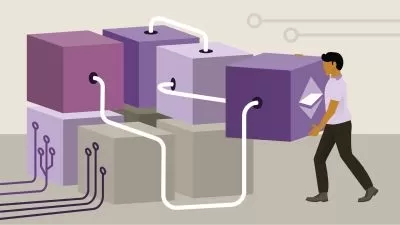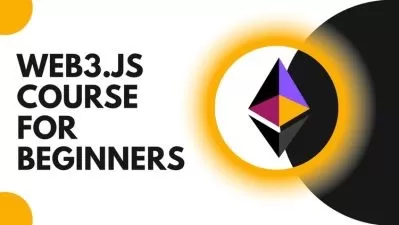Ethereum Development 101
Abhinav Raj
49:42
Description
Fundamentals of Truffle , Embark,Foundry and Hardhat , Do hands on development and automation tests
What You'll Learn?
- Learn Ethereum Development Stacks
- Learn Dapp Development
- Learn test and automation using Mocha , Chai and Waffle
- Learn useful Developer integrations ( ie. Truffle for VS Code)
Who is this for?
More details
DescriptionEthereum is a  non-hierarchical network of computers (nodes) that constructs and reaches consensus on the blockchain, a continuously expanding collection of "blocks" (batches of transactions). Each block has a unique identifier for the chain that must come before it in order for it to be regarded as genuine. Every time a node adds a block to its chain, it executes the block's transactions in the order they are stated, each of which has the potential to change the ETH balances and other storage values of Ethereum accounts. The "state," or collection of these balances and values, is kept on the node independently of the blockchain in a Merkle tree.
This course introduces you to various libraries and plugins that are used in Dapps Development. It also introduces you to Dapp development with hands-on sessions and demo.
The high-level programming languages used to create Ethereum's smart contracts are subsequently reduced to EVM bytecode before being deployed on the Ethereum network. They can be written in Solidity (a language library with resemblances to C and JavaScript), LLL (a low-level Lisp-like language), Yul (an intermediate language that can compile to various different backends—EVM 1.0, EVM 1.5, and eWASM are planned), Serpent (similar to Python but deprecated), and Mutan (Go-based, but deprecated). A research-focused language named Vyper was also in development at the time (a strongly-typed Python-derived decidable language). [Reference needed] In order for users to inspect the code and confirm that it compiles to the bytecode that is on-chain, source code and compiler metadata are typically published concurrently with the launch of the contract.
Who this course is for:
- Blockchai Developers and Learners
Ethereum is a  non-hierarchical network of computers (nodes) that constructs and reaches consensus on the blockchain, a continuously expanding collection of "blocks" (batches of transactions). Each block has a unique identifier for the chain that must come before it in order for it to be regarded as genuine. Every time a node adds a block to its chain, it executes the block's transactions in the order they are stated, each of which has the potential to change the ETH balances and other storage values of Ethereum accounts. The "state," or collection of these balances and values, is kept on the node independently of the blockchain in a Merkle tree.
This course introduces you to various libraries and plugins that are used in Dapps Development. It also introduces you to Dapp development with hands-on sessions and demo.
The high-level programming languages used to create Ethereum's smart contracts are subsequently reduced to EVM bytecode before being deployed on the Ethereum network. They can be written in Solidity (a language library with resemblances to C and JavaScript), LLL (a low-level Lisp-like language), Yul (an intermediate language that can compile to various different backends—EVM 1.0, EVM 1.5, and eWASM are planned), Serpent (similar to Python but deprecated), and Mutan (Go-based, but deprecated). A research-focused language named Vyper was also in development at the time (a strongly-typed Python-derived decidable language). [Reference needed] In order for users to inspect the code and confirm that it compiles to the bytecode that is on-chain, source code and compiler metadata are typically published concurrently with the launch of the contract.
Who this course is for:
- Blockchai Developers and Learners
User Reviews
Rating
Abhinav Raj
Instructor's Courses
Udemy
View courses Udemy- language english
- Training sessions 16
- duration 49:42
- Release Date 2022/12/14











